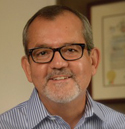Hispanic 101 & Latino Urbanism [INSIGHT]
December 10, 2014
 By Richard Vasquez / Vasquez & Associates
By Richard Vasquez / Vasquez & Associates
Just read an article in the LA Times on how Latino Urbanism is informing how LA is remaking and reinventing itself. This is not only taking place in traditional Latino communities like Boyle Heights and Pacoima but it is also happening alongside many African American communities in South and Southeastern LA. As I read the article I thought about how “Hispanic Marketing 101” historically influenced this dynamic.
For over thirty years, we as “Hispanic marketers” sought to construct a narrative for what newly arrived, Spanish-speaking immigrants should aspire to within the predominant post WWII narrative of “mainstream” US culture. Billions of dollars have been invested by brands to support this narrative, mostly on Spanish language media, pushing what Latino immigrants should eat, drink, wear and drive in order to be fully pursuing the American Dream.
What is absent from the “Hispanic 101” narrative is a discussion of community building in neighborhoods where Latino immigrants have settled and influenced the texture and scope of the new American multicultural mainstream. That was left to what Latinos do naturally: settle in, lay down roots and build communities with unique identity and social resonance that attracts others to want to live there. Hence the addition of Latino Urbanism to the community building narrative.
Spanish is very important to understanding Latino Urbanism. Newcomers can leverage what their Latino neighbors know about community building and building stronger and more diverse communities by listening intentionally. By doing so avoiding displacement and erosion of community identity as a result of gentrification.
City planner James Rojas picks up the story where marketers left off and talks about what happens when you take a close look at communities where Latinos have settled and where they have contributed to organically transforming those communities into vibrant and dynamic places. He notes the irony that the infusion of newcomers often results in the displacement of the very people that created that neighborhood vibe. In Latino neighborhoods this is exasperated when the narrative of the Spanish speaking community is not integrated into the narrative of community transformation as it is taking place.
Now the task is to merge the Spanish-speaking “community building” narrative into the narrative of community transformation in order to fend off displacement and erosion of community identity and keeping Latino communities authentic which is what attracts newcomers to Latino Urbanism in the first place.
CLICK HERE to read full article in LA Times.




























